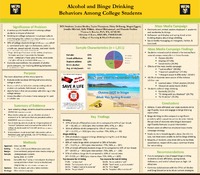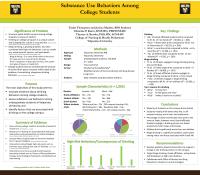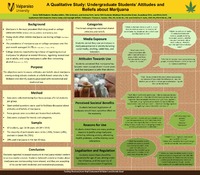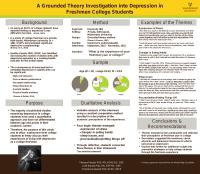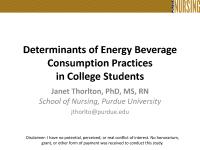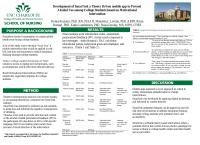| dc.contributor.author | Kessler, Theresa A. | en |
| dc.contributor.author | Kurtz, Christine P. | en |
| dc.contributor.author | Thompson, Taylor J. | en |
| dc.contributor.author | Mueller, Jessica | en |
| dc.date.accessioned | 2016-07-13T11:06:26Z | |
| dc.date.available | 2016-07-13T11:06:26Z | |
| dc.date.issued | 2016-07-13 | |
| dc.identifier | INRC16PST52 | |
| dc.identifier.uri | http://hdl.handle.net/10755/616184 | |
| dc.description | <p>Theme: Leading Global Research: Advancing Practice, Advocacy, and Policy</p> | en |
| dc.description.abstract | <p>Session presented on Thursday, July 21, 2016 and Friday, July 22, 2016:</p>
<p><strong>Purpose:</strong> In 2002, The Task Force of the National Advisory Council on Alcohol Abuse and Alcoholism identified drinking on college campuses as a unique culture and changing that culture was a top priority. Unfortunately, some drinking behaviors among these young adults have continue or increased (Substance Abuse and Mental Health Services Administration [SAMHSA], 2012). Within the drinking culture, binge drinking has emerged as a growing problem that has dangerous consequences. Binge drinking has been correlated with high-risk behaviors, such as unsafe sex, sexual assault, injuries, and even death (National Institute on Alcohol Abuse and Alcoholism [NIAAA], 2013). The NIAAA (2013) defines binge drinking as 4 drinks for women and 5 drinks for men within a few hours. The main objective of this study was to assess alcohol use behaviors among undergraduate students at a faith-based, mid-western university and identify aspects that are associated with binge drinking.</p>
<p><strong>Methods:</strong> Data were collected using a modified version of the Core Alcohol and Drug Survey: Long Form (Core Institute of Student Health Programs, 1994), which asks detailed questions about substance use behaviors. Following IRB approval, all undergraduate students (N = 3,052) during the 2014-2015 academic year were invited to participate in an online survey using Survey Monkey.</p>
<p><strong>Results:</strong> A total of 1,164 students responded and 1,095 completed the survey, yielding a 35.9% response rate. Results showed that 62.6% of respondents drank alcohol. There were differences in drinking behaviors based on Greek life affiliation and gender. Based on Greek affiliation, 83.9% of fraternity and sorority members drank alcohol compared to 57.3% not involved in Greek life (X2 = 66.001, p < .001). Of all students who drank alcohol, 71.7% engaged in binge drinking in the past 30 days. While there was no statistically significant difference in the rate of drinking alcohol based on gender (64% males, 65.3% females), there was a statistically significant difference in binge drinking among males (76.5%) and females (58.4%) (X2 = 50.800, p = .001). There were no significant differences for binge drinking and Greek life affiliation (X2 = 30.526, p = .106) or being an athlete (X2 = 20.281, p = .625). The top 3 reasons for drinking alcohol were: 86.5% 'to have fun,' 75.2% 'to feel good and relaxed,' 46.8% 'makes it easier to socialize.'</p>
<p><strong>Conclusion:</strong> The majority of students on this campus drank alcohol. Moreover, the rate of binge drinking was a significant problem among those who used alcohol, particularly males and those affiliated with Greek life. Based on these data, mass media and social norming strategies are being used to educate students. In particular, key events on campus including Halloween weekend, Greek bid day, and spring break are being targeted as the top binge drinking events on this campus. A follow-up survey will be distributed after spring break to assess knowledge and behaviors after the mass media and social norming interventions. Results from this second survey will be presented along with recommendations and implications for promoting safe alcohol use among college students.</p> | en |
| dc.format | Text-based Document | en |
| dc.language.iso | en | en |
| dc.subject | Alcohol | en |
| dc.subject | Binge Drinking | en |
| dc.subject | College Students | en |
| dc.title | Alcohol and binge drinking behaviors among college students | en |
| dc.type | Poster | en |
| dc.rights.holder | <p>
All rights reserved by the author(s) and/or publisher(s) listed in this item record unless relinquished in whole or part by a rights notation or a Creative Commons License present in this item record.
</p><p>
All permission requests should be directed accordingly and not to the Sigma Repository.
</p><p>
All submitting authors or publishers have affirmed that when using material in their work where they do not own copyright, they have obtained permission of the copyright holder prior to submission and the rights holder has been acknowledged as necessary.
</p> | |
| dc.description.note | <p>Items submitted to a conference/event were evaluated/peer-reviewed at the time of abstract submission to the event. No other peer-review was provided prior to submission to the Henderson Repository.</p> | en |
| dc.type.category | Full-text | en |
| dc.evidence.level | N/A | en |
| dc.research.approach | N/A | en |
| dc.contributor.department | Zeta Epsilon | en |
| dc.author.details | Theresa A. Kessler, RN, ACNS-BC, CNE; Christine Kurtz, RN, PMHCNS-BC; Taylor Thompson; Jessica Mueller | en |
| dc.conference.name | 27th international Nursing Research Congress | en |
| dc.conference.host | Sigma Theta Tau International | en |
| dc.conference.location | Cape Town, South Africa | en |
| dc.date.conferenceyear | 2016 | |
| dc.contributor.affiliation | Valparaiso University, Valparaiso, Indiana, USA | en |
| dc.description.reviewtype | Abstract Review Only: Reviewed by Event Host | en |
| dc.description.acquisition | Proxy-submission | en |
